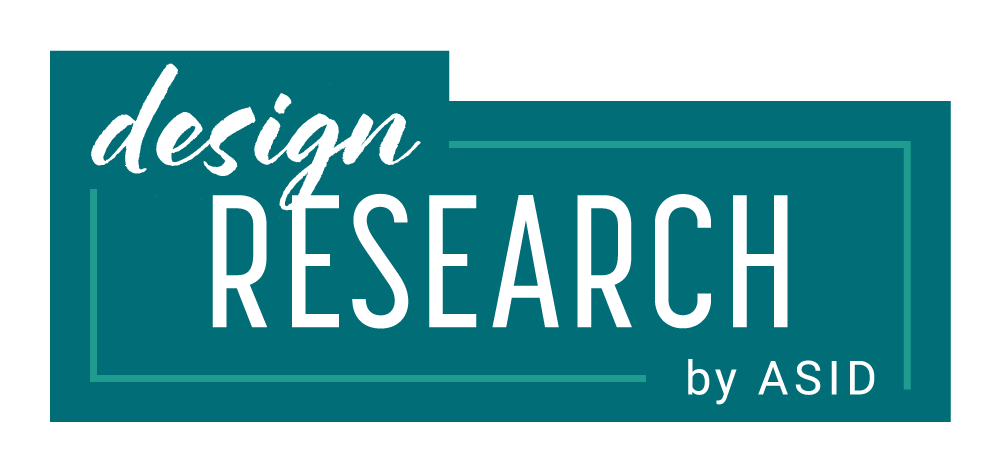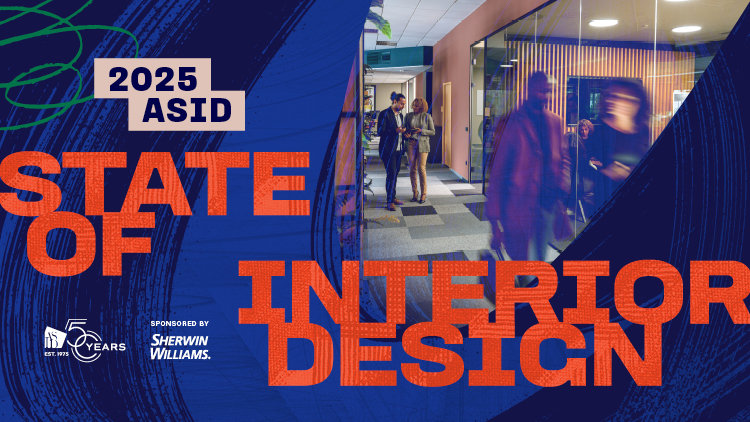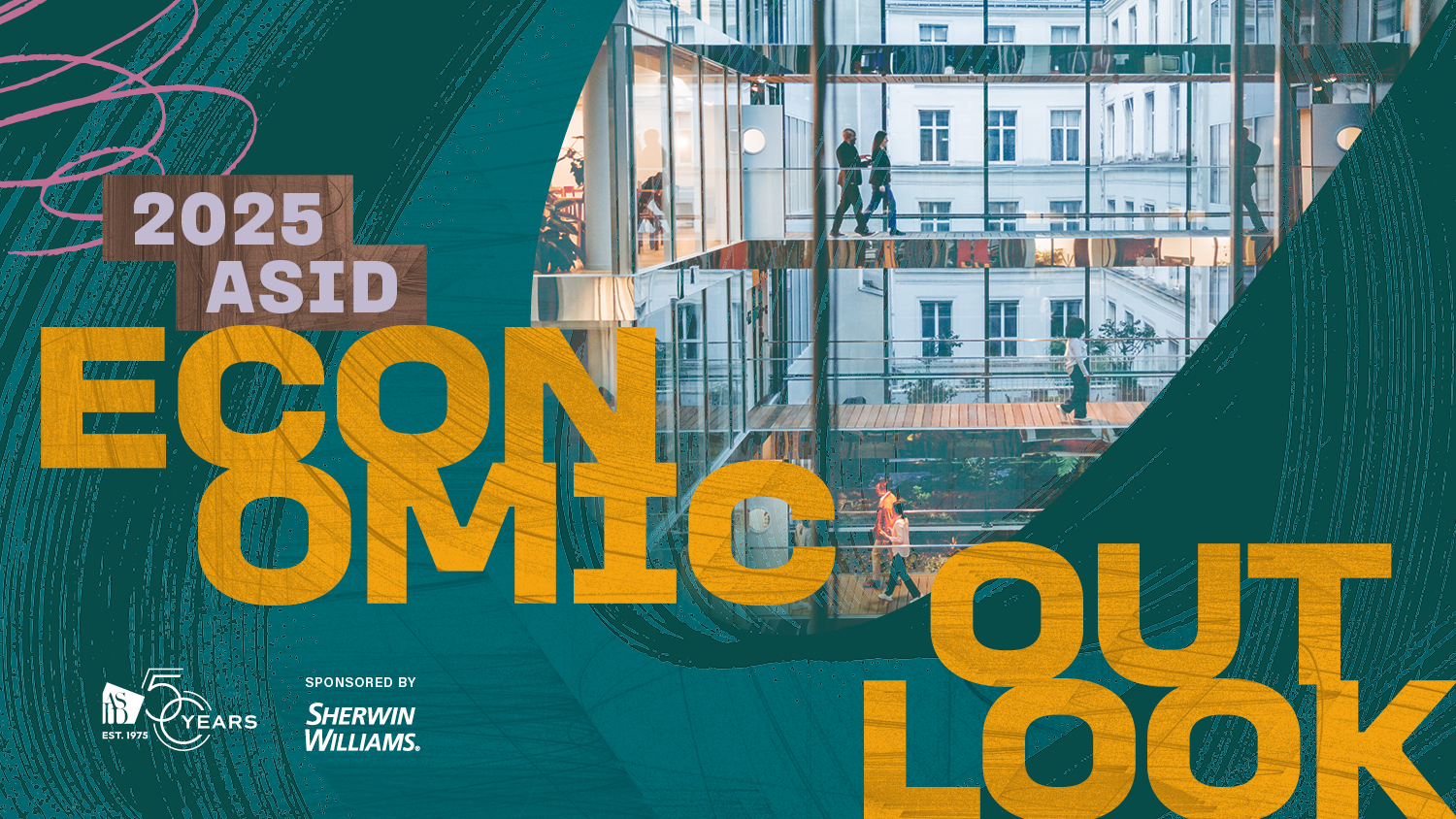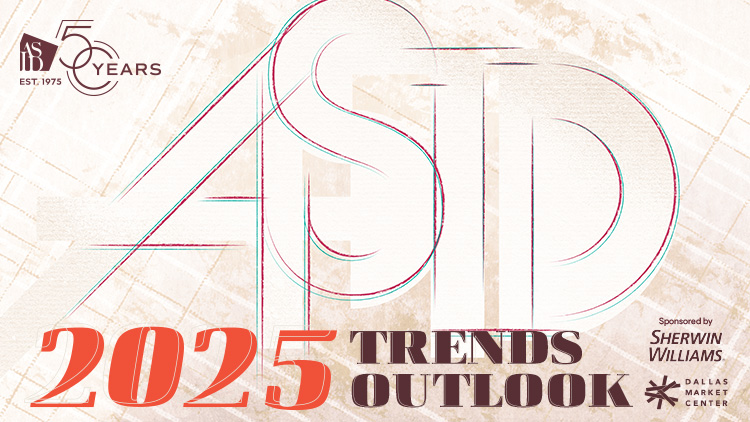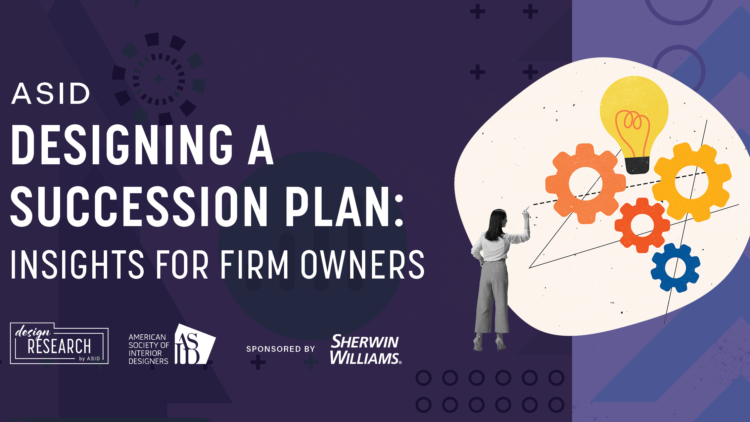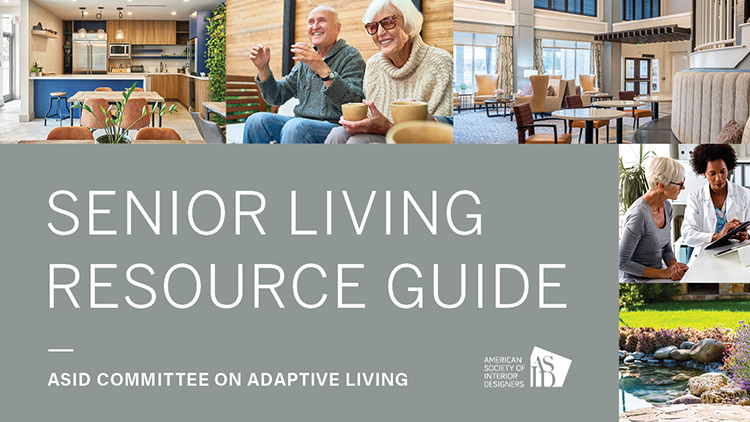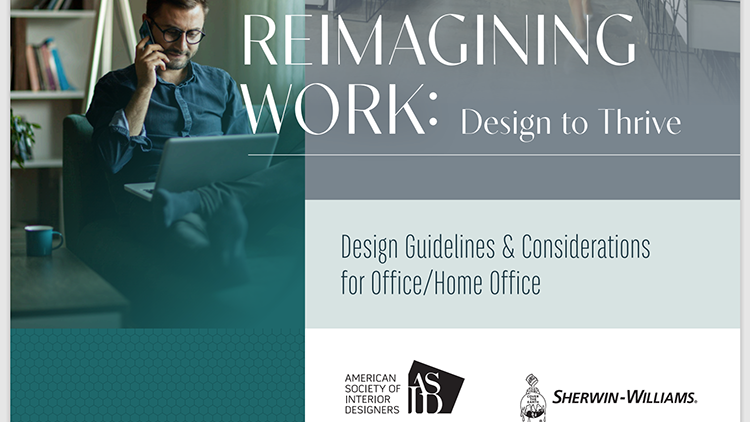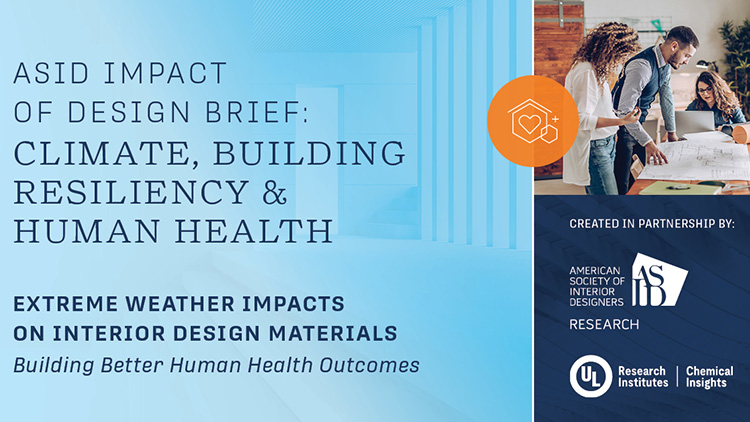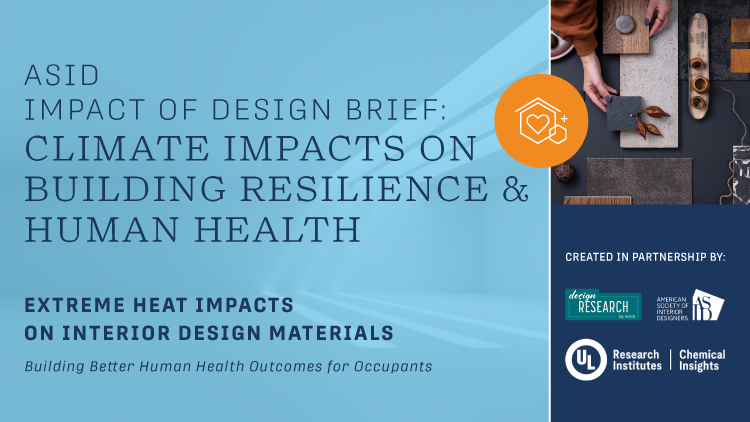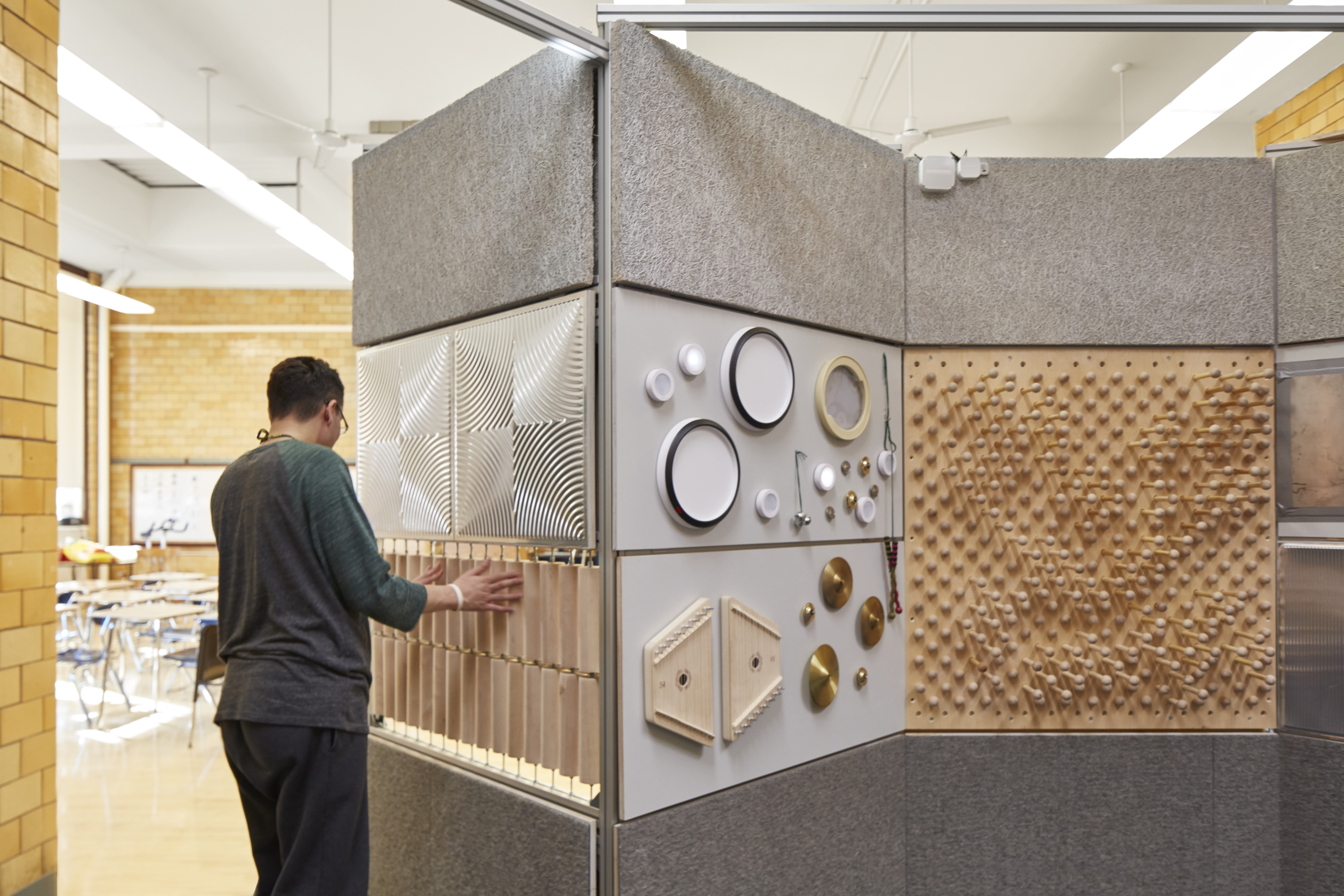Design Research by ASID
ASID research projects focus on the business, impact, and practice of design. They span design career stages, space types, and topic areas.
DESIGN INDUSTRY & PROFESSION
2025 ASID State of Interior Design Outlook
The 2025 ASID State of Interior Design Outlook report, sponsored by Sherwin-Williams, outlines the current state of interior design, segmented into three key areas: People, Business, and Services. Over the last decade, the interior design community has experienced remarkable growth, embraced new opportunities, and celebrated many successes. Discover essential insights that reveal the evolving dynamics of the industry.
2025 ASID Economic Outlook
The 2025 ASID Economic Outlook report, sponsored by Sherwin-Williams, breaks down key trends impacting the design industry, from inflation and interest rates to labor shortages and consumer demand. This second installment of the Outlook research series equips interior designers with vital economic data and predictions to navigate their businesses through the year.
2025 ASID Trends Outlook
Use the 2025 ASID Trends Outlook report, sponsored by Sherwin-Williams and the Dallas Market Center, to gain insight into the influences shaping the interior design landscape. Predictions for the year ahead include analysis of the workforce’s emphasis on collaboration and alternative education pathways, the redefinition of family life, and the incorporation of design elements that evoke joy, among others.
2024 ASID Compensation & Benefits
The 2024 ASID Compensation & Benefits report, sponsored by Sherwin-Williams, draws on data collected as part of the ASID Member Census conducted in 2023 to provide interior design employees and employers with current data on labor market trends, salaries, benefits, and drivers of job satisfaction. With this information, employees can better assess their current job situation and make informed decisions about their future career choices, and employers can have a better understanding of the factors that most influence employees’ hiring decisions, performance, and retention.
ASID Talent Acquisition
The ASID Talent Acquisition report, sponsored by Sherwin-Williams, explores challenges and present strategies that design firm leaders can use to help leaders tailor and update their talent acquisition strategies. Regardless of the number of employees, firms of different sizes are impacted by the same demographic shifts and can customize many of these strategies and ideas to fit their culture and resource constraints.
ASID Designing a Succession Plan: Insights for Firm Owners
ASID, in partnership with Greenway Group, presents this in-depth report to help design firm owners navigate the complexities of succession planning. With a focus on internal ownership transitions, the Designing a Succession Plan report, sponsored by Sherwin-Williams, addresses both the emotional and operational challenges that come with preparing for leadership change. It offers practical strategies to create a long-term plan that preserves firm values, supports staff, and ensures business continuity.
DESIGN PRACTICE
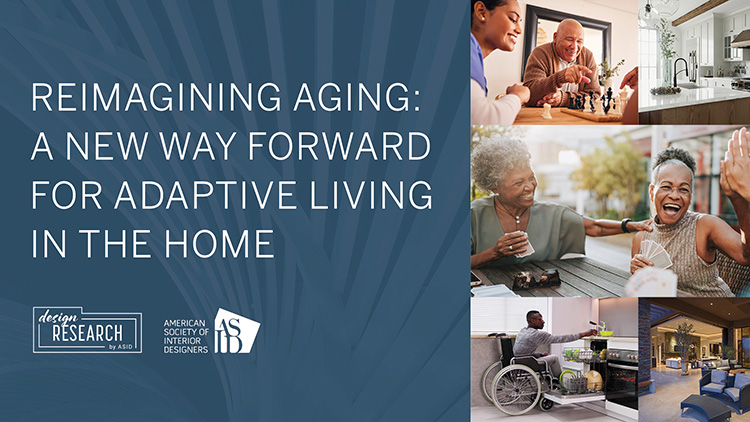
ASID Reimagining Aging: A New Way Forward For Adaptive Living in the Home
ASID presents this in-depth report to help designers navigate the growing demographic shift in the U.S., offering universal design and adaptive living strategies to create accessible, stylish homes that meet evolving needs. By making accessibility a standard in design, this guide empowers professionals to craft environments that promote independence, comfort, and quality of life—supporting residents at every stage without compromising lifestyle or aesthetics.
CEU Resources:
Senior Living Resource Guide
Developed by ASID’s Committee on Adaptive Living, this guide provides insight into the current challenges of senior living communities, including social isolation, the spread of illnesses and lack of choices for leisure and living environments, which have impacted the mental and physical health of many adults over the age of 65. This guide equips designers with tools to design for safe community interaction, prevent social isolation and improve the wellbeing of residents, caregivers, and employees in these spaces.
ASID Reimagining Work: Design to Thrive
With remote work becoming more prevalent post-pandemic, the way and where we work have shifted. Hybrid work has become the norm for many knowledge workers, and organizations are reevaluating their work processes and office footprints. In this era of change, what questions should we ask as we strive to thrive? ASID partnered with Sherwin-Williams on this research to guide the design community into the new working environment. This resource guide is designed to reimagine the workplace in the office and at home by exploring how and where we work from a new perspective.
ASID Impact of Design Brief: Climate Impacts on Building Resilience & Human Health
The rise in synthetic products, coupled with the focus on airtight buildings to conserve energy, has led to a rise in volatile organic compounds (VOCs), semivolatile organic compounds (SVOCs), particulate matter (PM) and chemical-related indoor air quality (IAQ) issues, resulting in building-related illness, litigation and leasing problems. With this knowledge, interior designers can drive market transformation collectively towards healthier spaces, improving building resiliency and mitigating some of the climate-related challenges for occupants. To learn more about wildfire health risks and how interior designers can support healthier spaces, visit the Clear the Air: Wildfires and Human Health website.
ASID Impact of Design Brief: Extreme Heat Impacts on Interior Design Materials
Clients have become increasingly concerned about the rise in extreme weather events—record-breaking heatwaves, hurricanes, severe flooding, tornadoes, and wildfires —which have resulted in devastating destruction and prolonged power outages. In this brief, ASID, in collaboration with the Chemical Insights Research Institute (CIRI), explores the health and safety impacts of these environmental factors on the built environment.
IMPACT OF DESIGN
ASID IMPACT REVIEW: INSIGHTS BRIEFS
How has COVID-19 impacted designers and the profession of interior design? ASID has the answers for you — the ASID INSIGHTS Briefs explore the critical role interior designers play in shaping the built environment in the wake of the pandemic.
Use the ASID INSIGHTS Briefs to identify opportunities to connect, lead, and collaborate on issues related to the built environment.
ASID FOUNDATION INITIATIVES
In our mission to support informed, sustainable, and healthy initiatives in the design of built spaces, the ASID Foundation provides funding to individuals and groups. ASID, its members, and donors are proud that since 2012, the ASID Foundation has awarded over $1,000,000 through our programs.
Learn about the ASID Foundation Research Projects and support the ASID Foundation!
THE IMPACT OF DESIGN SERIES
The American Society of Interior Designers (ASID) believes that design impacts lives, and collaborates with others to promote the value of interior design. These select projects support this mission and have gone through pre- and post-occupancy research to educate designers and clients on the power of design.
